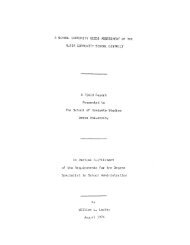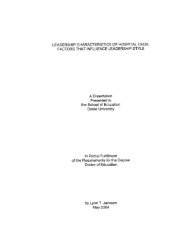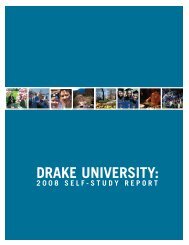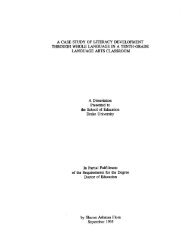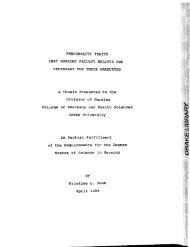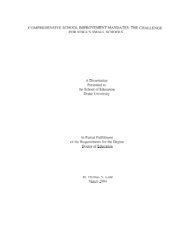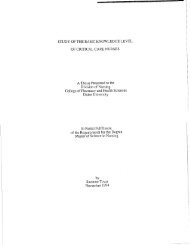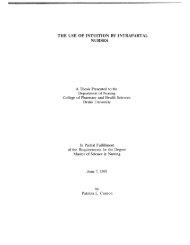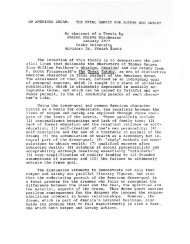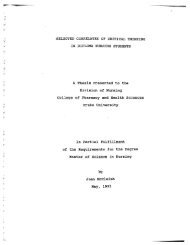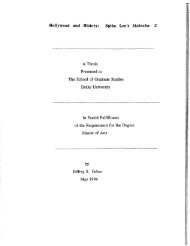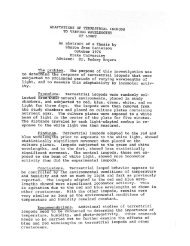LOCUS OF CONTROL ORIENTATION AND LEVEL - Drake University
LOCUS OF CONTROL ORIENTATION AND LEVEL - Drake University
LOCUS OF CONTROL ORIENTATION AND LEVEL - Drake University
Create successful ePaper yourself
Turn your PDF publications into a flip-book with our unique Google optimized e-Paper software.
What to do with the MHLC scores once vou eet them<br />
The whole purpose of the Multidimensional HLC Scdes is that you do<br />
- not end up with a single score indicative of internality or externality. Instead,<br />
you end up with three scores: IHLC, PHLC & CHLC--the first assessing<br />
"internality," and the other two separate aspects of "externality." They should<br />
- not be combined into one measure.<br />
If it is important for your hypothesis to be able to classify someone as<br />
"internal" or "external," or if you wish to use analysis of variance to analyze<br />
your data, there are a couple of options available to you, none of which is<br />
necessarily the "best" way.<br />
One option is to pick any one of the three scores--say , IHLC, for<br />
example--and split it at the median into two groups: e.g., "high internals" and<br />
"low internals" (note that this latter group is not necessarily "external," because<br />
it could contain some subjects who also score low on the PHLC and/or the<br />
CHLC). You could do this with any one of the three scales.<br />
Another approach is to convert all your raw scale scores into standard (z<br />
or T) scores and label a given subject as an "internal," "powerful others<br />
extemd, " or "chance external, " depending on which of the subject's three<br />
standardized scores is the highest.<br />
A third option, one that we are beginning to use with increasing<br />
frequency, is to do median splits on all three scales and to classify subjects into<br />
one of the eight "types" depending on their pattern of being above ("high") or<br />
below ("low") the median of the scales. (This typology was first addressed in<br />
our chapter in the Sanders & Suls book, 1982.) Only one of these eight types<br />
(high on IHLC, low on both PHLC & CHLC) can be called "pure internal, " but<br />
some of the other types which contain a mixture of internality and externality<br />
are theoretically quite interesting. At first glance, this third method appears to<br />
need a large number of subjects in order to be useful, but this turns out not to<br />
be the case. You don't, after all, need to include all eight types in your<br />
analysis.<br />
Whichever method you choose to classify your subjects, remember that<br />
you can (and often should) analyze your data factorially by crossing HLC<br />
category with health value. Again, you can split health value any way you<br />
wish, but we usually do a median split based on sample rank frequencies. (See



